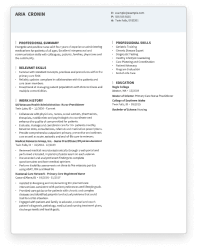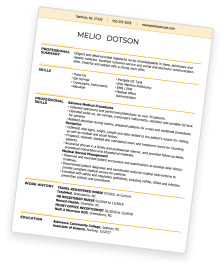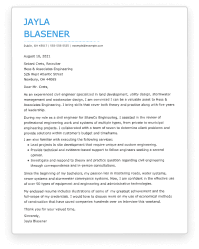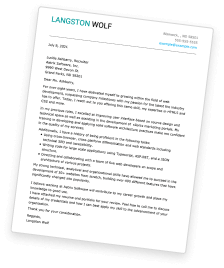Home Health Aide Resumes: Overview
As a home health aide, your responsibilities encompass caring for individuals who need support in the comfort of their homes, ensuring their well-being and quality of life.
Home health aides can be found in various environments, including:
- Private residences
- Assisted living facilities
- Hospice care centers
- Rehabilitation centers
- Group homes
To excel as a home health aide, the most important skills and qualifications include empathy, excellent communication, patience, and a deep understanding of basic healthcare procedures, which must be effectively portrayed on your resume.
With our home health aide resume examples, you can be sure to build the best resume possible. For more resources, check out our library of professional resume examples and download one of our customizable resume templates today!
Home Health Aide Resume Sample
Here, we have an excellent resume example for a home health aide professional. Use it as a template for your next application, and keep in mind its best features.
-
Professionally Organized:
This sample takes advantage of the traditional structure of a resume, allowing the candidate to clearly label each section of qualifications for the home health aide position.
-
Effective Summary:
Right away, this resume states why the candidate would make a great home health aide professional thanks to its summary that introduces key skills and experiences, which entices the reader to learn more.
-
Useful Coloring:
The color of the borders between sections keeps the resume organized, while having the additional impact of making the resume more unique and memorable.
-
Relevant Experience:
This resume example lists previous job titles as "home health aide", "live-in caregiver", and "senior companion caregiver", all of which demonstrate qualifying experience that is relevant to the position.
Home Health Aide Resume Example
Consider using this sample resume for your next home health aide position, paying close attention to its use of design and choice of qualifications that demonstrate the candidate’s abilities.
-
Bold Design:
With enlarged text for headings, along with thick dividing borders, this home health aide resume immediately jumps off the page and makes an impact on the reader.
-
Useful Skills:
A dedicated section of skills lists abilities such as "progress documentation" and "care plan management" which make this resume targeted to a specific home health aide position.
-
Focus on Experience:
Most of this home health aide resume sample is focused on past work experience that adds credibility to the candidate's skills and strengthens their case for hiring.
-
Effective Use of Whitespace:
This resume example balances whitespace among the text to prevent clutter and make the resume easier to read.
How to Write a Home Health Aide Resume
Knowing how to write an impactful resume is an important part of getting a job as a home health aide. Use our step-by-step guide to help you with your next application.
-
Choose a Format:
When creating your home health aide resume, it's crucial to choose a format that best highlights your qualifications. Consider the chronological format to emphasize your work history in the field, the functional format if you want to showcase transferable skills gained in related roles, or the combination format for a balanced approach that highlights both experience and skills effectively.
-
Contact Information:
Your resume should begin with your contact information at the top, including your full name, phone number, professional email address, and location (city and state). Consider adding your LinkedIn Profile or a professional website if applicable.
-
Summary or Objective:
At the top of your resume, craft a three- to four-sentence professional summary or objective statement that gives potential employers a clear sense of your career intentions and the value you could bring. If you have relevant work experience, write a resume summary and focus it on your key qualifications, skills, and accomplishments that are specifically relevant to the job position.
Alternatively, opt for an objective statement if you recently graduated or are shifting your career focus. Here, briefly describe your professional goals and draw parallels between your aspirations and the open position.
-
Work History:
The work history section details your relevant home health aide experience or transferable skills from related positions. Use bullet points to describe your responsibilities, achievements, and how you positively impacted patients' lives, quantifying achievements when possible.
-
Skills:
Highlight your skills section to showcase your core competencies. Include both hard skills, such as administering medications and wound care, and soft skills, like empathy and communication, which are vital in home healthcare. Read over the job description to find specific skills to showcase.
-
Education:
Share your educational background, including any certifications or degrees related to home healthcare. Mention any additional training or courses that make you stand out as a well-prepared home health aide.
-
Additional Sections:
Consider adding sections like 'Certifications' or 'Volunteer Experience' to bolster your resume further. These can provide valuable insights into your qualifications and dedication as a home health aide.
Key Skills For Home Health Aide Resumes
Having the right combination of hard skills and soft skills on your home health aide resume is key to making an impact with potential employers. Here are some of the most popular skills to consider:
Top 5 Hard Skills for Home Health Aide Resumes
- Medication Management: Proficiency in administering medications, understanding dosages, and adhering to medication schedules is a fundamental hard skill in this role.
- Wound Care: Home health aides should be skilled in wound care, including cleaning, dressing changes, and monitoring healing progress.
- Medical Documentation: Accurate and thorough record-keeping is vital for tracking patients’ conditions, ensuring seamless communication with healthcare providers, and ensuring quality care.
- Vital Signs Monitoring: An important technical skill, proficiency in measuring and recording vital signs such as blood pressure, pulse, and temperature is essential for gauging patients’ health.
- Safety Protocols: Knowledge of safety procedures and maintaining a safe patient environment, including fall prevention and infection control measures.
Top 5 Soft Skills for Home Health Aide Resumes
- Empathy: An empathetic and compassionate nature is essential for building trust and providing emotional support to patients and their families.
- Communication: Effective communication is key for understanding patients’ needs, reporting observations to healthcare providers, and collaborating with the care team.
- Patience: Home health aides often work with patients facing physical and emotional challenges, requiring the patience to provide care at their own pace.
- Adaptability: Adapting to different patient needs and environments is crucial, as home health aides encounter diverse situations.
- Time Management: Efficient time management ensures timely care delivery and the ability to prioritize tasks effectively.
These hard and soft skills collectively empower home health aides to provide exceptional care, making them valuable assets to their patients and the healthcare industry. However, it is important that you tailor your resume to the specific job you are applying to, so make sure to pick relevant skills.
Key Certifications For Home Health Aide Resumes
Certifications are a significant aspect of a home health aide’s qualifications on their resume. They not only demonstrate your commitment to the profession but also ensure that you possess the necessary skills and knowledge to provide high-quality care. Here are some of the most popular:
Top 5 Certifications for Home Health Aide Resumes
- Certified Home Health Aide (CHHA): This certification is a fundamental requirement and signifies that you’ve completed the necessary training to become a home health aide, including both classroom and hands-on experience.
- CPR and First Aid Certification: Being certified in CPR (Cardiopulmonary Resuscitation) and first aid is crucial for immediate response in emergency situations, ensuring the safety of your patients.
- Medication Aide Certification: This certification enables you to assist patients with medication management, ensuring you’re well-versed in the safe administration of medications.
- Certified Nursing Assistant (CNA): While not always mandatory, a CNA certification can enhance your qualifications, as it encompasses a broader range of skills applicable to home health care.
- Dementia Care Certification: As many home health aide patients may have dementia or related conditions, a dementia care certification equips you with specialized knowledge and skills to provide effective care in such cases.
Helping Job Seekers Like You
7 Tips For Writing A Home Health Aide Resume
- Highlight Relevant Experience: Showcase your experience in the healthcare or caregiving field prominently. Detail your responsibilities, emphasizing tasks related to patient care.
- Quantify Achievements: Whenever possible, include quantifiable achievements, such as the number of patients cared for, improved patient outcomes, or successful medication management.
- Tailor to the Job: Customize your resume for each job application. Align your skills and experience with the specific requirements of the position you’re applying for.
- Education and Certifications: Clearly list your educational background, including any relevant certifications. Highlight your CHHA, CNA, or other pertinent qualifications.
- Focus on Safety: Emphasize your commitment to safety protocols. Mention your experience in infection control, fall prevention, and other measures to ensure patient safety.
- Highlight Diverse Patient Experience: If you’ve cared for a wide range of patients, including those with various medical conditions, specify this to demonstrate your adaptability.
- Showcase Continuing Education: Mention any additional training or courses you’ve completed to stay up-to-date with the latest healthcare practices and technology.


Save Time With Hloom's Resume Builder
Key Takeaways
Customize your home health aide resume for each job application, aligning your skills and experiences with the specific requirements of the position.
A successful home health aide possesses a balance of hard skills like medication management and wound care, and soft skills like empathy and communication, which are essential for quality patient care.
Quantifying your resume, such as the number of patients cared for or improved patient outcomes, provide tangible evidence of your impact.
Use a professional summary at the top of your resume if you have experience in home health aide.
More Resume Examples
Save Time With Hloom's Cover Letter Builder








